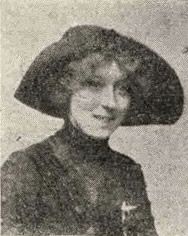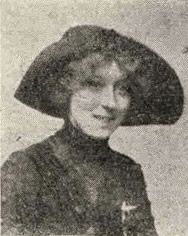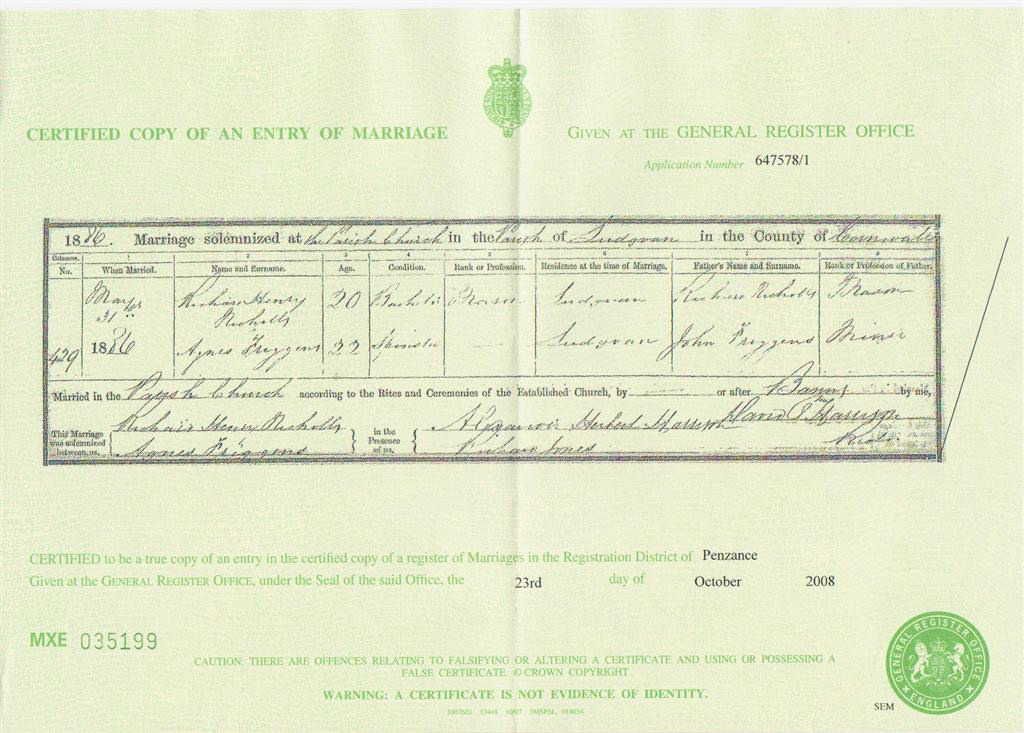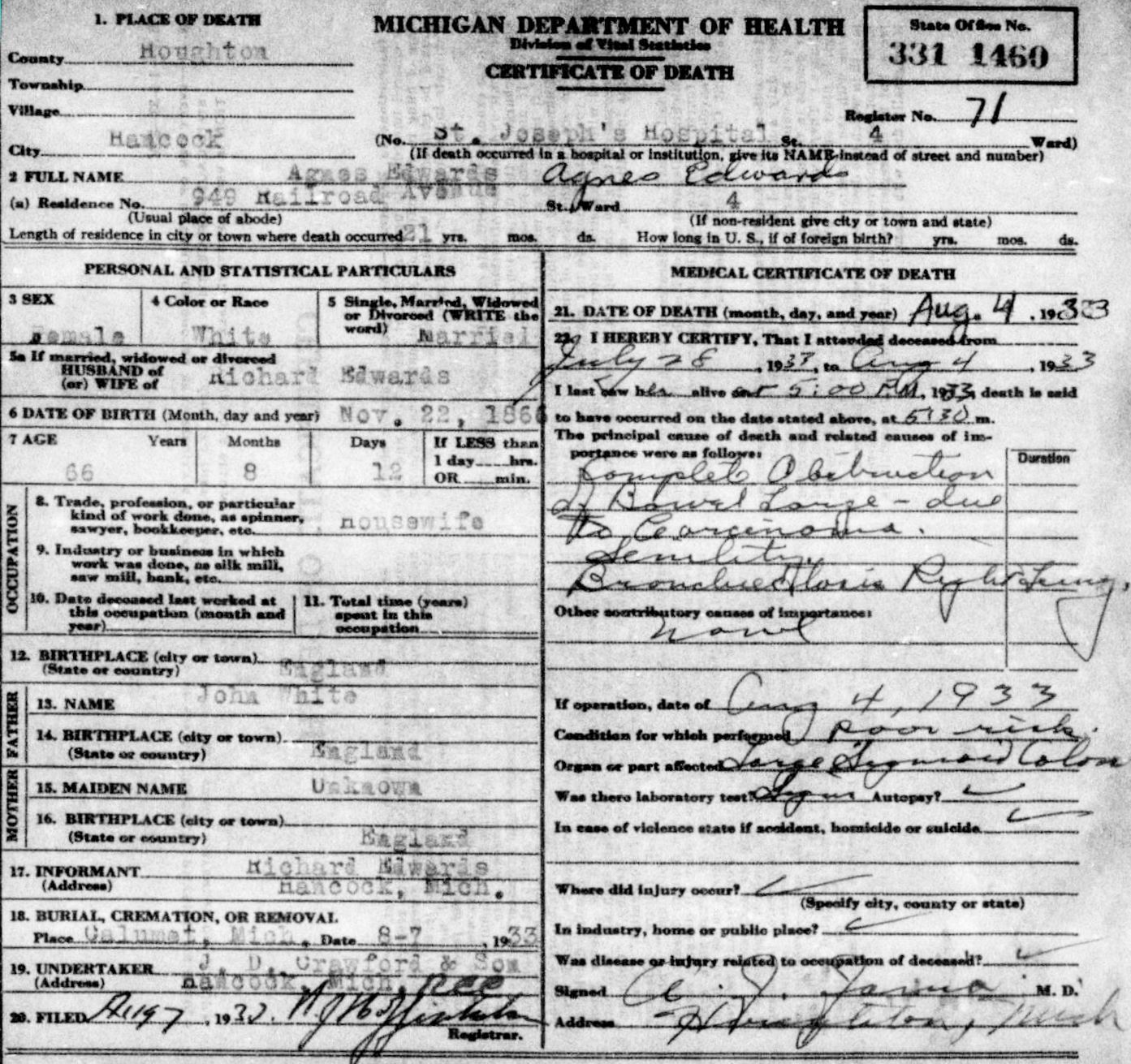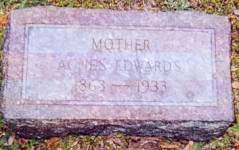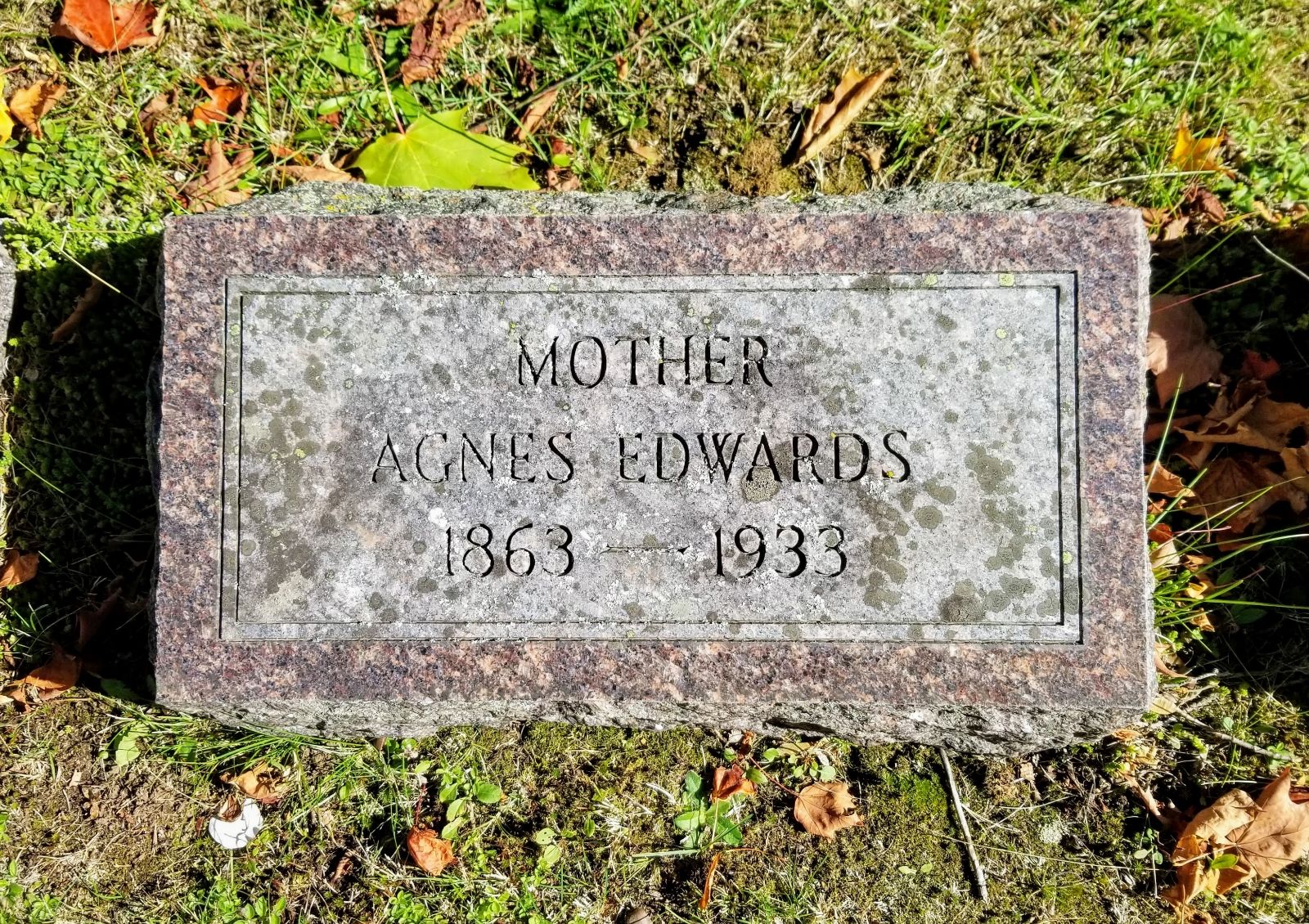Boarded the Titanic in 2nd Class with her son John, a family friend Joseph Charles Nicholls, and Maude Sincock.
When the Titanic sank, Elizabeth and John escaped the Titanic in Lifeboat #14.
Maude Sincock survived in Lifeboat #11 and later died in 1984.
Joseph Charles Nicholls died in the sinking, his body was recovered (#101) and later buried at sea.
Elizabeth Agnes Mary Davies passed away in 1933.
Second husband was Davies, third husband was Edwards.∼Mrs Agnes Davies (or Davis) was born as Agnes Friggens, in Ludgvan, Cornwall, England on 23 November 1861.
She was the daughter of Grace Friggens (b. circa 1841 in Gulvall, Cornwall) who was unmarried at the time of her birth. Grace seemingly married a few years later to a man named Thomas Victor and had at least one more child before emigrating to the USA, leaving Agnes behind.
Agnes was apparently raised by Henry White (b. 1820) and Dinah White (b. 1819), the latter née Rowe, natives of Ludgvan who already had a large family. Agnes first appears on the 1871 census living with them at an address in Lennor, Penzance. By the time of the 1881 census, Dinah (now a widow) and Agnes are the only ones present at their home on New Mill, Madron, Penzance and both are described as charwomen.
Agnes was married in Penzance on 31 May 1886 to Richard Henry Nicholls (b. 11 August 1867 in Ludgvan, son of Richard and Charity Nicholls), a mason who worked at the quarry at Trenowith Downs. The couple had three children: Mary Ethel (b. 1886), Richard Henry (1890-983) and Joseph Charles (b. 1892) and the family appeared on the 1891 census living at an unspecified address in Nancledra, Cornwall. When Agnes' husband Richard Nicholls died is not certain but she was listed as widow on the 1901 census when she and her children were living at Corbis Bay, Uny Lelant, Cornwall.
She was remarried in Penzance in early 1903 to Robert Davies (b. 1843 in St Ives, Cornwall), an insurance agent. The couple had their only child several months later on 31 July, John Morgan Davies. Sadly Agnes was widowed again when her husband died in 1910. Agnes, her son John and two sons from her first marriage appeared on the 1911 census living at the Stennack in St Ives.
Not long afterward her eldest son, Richard Nicholls and his wife, emigrated to Kearsarge near New Allouez, Houghton, Michigan. A short while later Agnes decided to take her family to join her son and daughter-in-law in America. To raise the necessary funds she sold all her belongings in St Ives. With this done their ticket (number 33112 which cost £36, 15s) was purchased from William Cogar who was the White Star agent in St Ives. The family left St Ives by train and travelled with a family friend, Maud Sincock of Halsetown. Agnes and her infant son, John Davies occupied a cabin with Maude Sincock and also Alice Phillips of Ilfracombe, Devon; her elder son Joseph had separate accommodation.
Agnes survived the sinking (probably in lifeboat 14) with her youngest child but her son Joseph was lost. The events immediately before and after the sinking were recounted by her to a Calumet newspaper on arrival in Michigan.
'We were in our berths when the steamer struck the iceberg at 11.50 the night of Sunday. we felt the jar but did not imagine that anything serious had occurred. However I rang for the steward for the purpose of making inquiries. He assured us that nothing of consequence had happened and that we could remain in our berths without fear. A few minutes later Miss Phillips' father, who was also a passenger on the boat called his daughter and told her to dress. She went on deck and returned shortly and said orders had been given for all the passengers to dress and put on lifebelts. By this time I had dressed, although my little son was still sleeping. The steward again came to the stateroom and said there was no danger or occasion for fear. I decided to dress the boy, however, and did so.
My son Joseph had dressed and he came to the stateroom and put lifebelts on us. Through all this time we had received no warning from the steward, no orders to prepare for anything like what we were to experience. Had it not been for our curiosity to learn what was going on we might have perished. we went on deck about 12.15 and my son and myself were placed in the third lifeboat.
My older son, Joseph, helped to place us in the boat and asked permission to enter it himself, this being refused with the threat that he would be shot if he attempted to get in. I pleaded with the officers in vain, that he be allowed to come with me. There were about fifty in the boat, but there was room for more. After we were lowered away and before the boat left the ship some men entered it by sliding down the davit ropes. The men in charge of the boat rowed as hard as they could to get away from the ship. By the time she sank, which was at 1.45, it seemed as if we were miles away, although I could hear the screams, cries and moaning of the drowning passengers.'
Agnes and her son John spent about 5 hours in the boat before being picked up by the Carpathia aboard which she commented that 'everything possible was done for the saved'.
On arrival in New York in addition to overnight accommodation, she was given a train ticket, $5 in cash and a lunch box by the White Star Line. She left New York by train heading for Mohawk, Michigan. Once in Michigan passengers on the train between Negaunee and Calumet recognising her need, raised 'a neat little sum for her benefit'. A subscription list was also started for her benefit in Calumet. The Calumet News also went on to say that Mrs Davies was a 'pleasant and refined woman but greatly overwrought and nervous as a result of her experience, suffering and bereavement. The sinking of the Titanic had taken from her, her almost sole support, a nineteen year old son. The loss of whom seems to her to have been unnecessary, too, which makes it all the harder to bear. '
The following appeared in the St Ives Times in early May 1912.
MRS DAVIES ARRIVES IN MOHAWK.
We have received welcome news this week that Mrs Agnes Davies, formerly of St Ives, and her nine year old son - Master John Morgan Davies - have at last reached Mohawk. On arriving they were met by Mr Richard Henry Nicholls, Mrs Nicholls, and Mr G P Curnow, the latter being a close personal friend of Mrs Davies's family. There was a most touching scene between mother and son, after their trying ordeal. the last time they met Mr Joseph Nicholls - who perished in the 'Titanic' disaster - was a member of the family circle which then gathered. Mrs Davies's sufferings were very noticeable, and the suspense and agony of mind and body have left their marks upon her.
She later recounted her experiences on the Titanic at the Calumet Opera House.
Agnes remained in Hancock, Michigan for the rest of her life and was remarried in 1921 to Richard Edwards (b. 1881), a fireman of English birth. The couple lived at 949 Railroad Avenue in Hancock.
Agnes passed away in St Joseph's Hospital, Hancock, Houghton County, Michigan on 4 August 1933, aged 71 and she was buried on 7 August 1933 Lakeview Cemetery, Calumet, Houghton, Michigan. This cemetery also holds a memorial to her son Joseph Nicholls and the grave of her son, John Davies who died in 1951.
Boarded the Titanic in 2nd Class with her son John, a family friend Joseph Charles Nicholls, and Maude Sincock.
When the Titanic sank, Elizabeth and John escaped the Titanic in Lifeboat #14.
Maude Sincock survived in Lifeboat #11 and later died in 1984.
Joseph Charles Nicholls died in the sinking, his body was recovered (#101) and later buried at sea.
Elizabeth Agnes Mary Davies passed away in 1933.
Second husband was Davies, third husband was Edwards.∼Mrs Agnes Davies (or Davis) was born as Agnes Friggens, in Ludgvan, Cornwall, England on 23 November 1861.
She was the daughter of Grace Friggens (b. circa 1841 in Gulvall, Cornwall) who was unmarried at the time of her birth. Grace seemingly married a few years later to a man named Thomas Victor and had at least one more child before emigrating to the USA, leaving Agnes behind.
Agnes was apparently raised by Henry White (b. 1820) and Dinah White (b. 1819), the latter née Rowe, natives of Ludgvan who already had a large family. Agnes first appears on the 1871 census living with them at an address in Lennor, Penzance. By the time of the 1881 census, Dinah (now a widow) and Agnes are the only ones present at their home on New Mill, Madron, Penzance and both are described as charwomen.
Agnes was married in Penzance on 31 May 1886 to Richard Henry Nicholls (b. 11 August 1867 in Ludgvan, son of Richard and Charity Nicholls), a mason who worked at the quarry at Trenowith Downs. The couple had three children: Mary Ethel (b. 1886), Richard Henry (1890-983) and Joseph Charles (b. 1892) and the family appeared on the 1891 census living at an unspecified address in Nancledra, Cornwall. When Agnes' husband Richard Nicholls died is not certain but she was listed as widow on the 1901 census when she and her children were living at Corbis Bay, Uny Lelant, Cornwall.
She was remarried in Penzance in early 1903 to Robert Davies (b. 1843 in St Ives, Cornwall), an insurance agent. The couple had their only child several months later on 31 July, John Morgan Davies. Sadly Agnes was widowed again when her husband died in 1910. Agnes, her son John and two sons from her first marriage appeared on the 1911 census living at the Stennack in St Ives.
Not long afterward her eldest son, Richard Nicholls and his wife, emigrated to Kearsarge near New Allouez, Houghton, Michigan. A short while later Agnes decided to take her family to join her son and daughter-in-law in America. To raise the necessary funds she sold all her belongings in St Ives. With this done their ticket (number 33112 which cost £36, 15s) was purchased from William Cogar who was the White Star agent in St Ives. The family left St Ives by train and travelled with a family friend, Maud Sincock of Halsetown. Agnes and her infant son, John Davies occupied a cabin with Maude Sincock and also Alice Phillips of Ilfracombe, Devon; her elder son Joseph had separate accommodation.
Agnes survived the sinking (probably in lifeboat 14) with her youngest child but her son Joseph was lost. The events immediately before and after the sinking were recounted by her to a Calumet newspaper on arrival in Michigan.
'We were in our berths when the steamer struck the iceberg at 11.50 the night of Sunday. we felt the jar but did not imagine that anything serious had occurred. However I rang for the steward for the purpose of making inquiries. He assured us that nothing of consequence had happened and that we could remain in our berths without fear. A few minutes later Miss Phillips' father, who was also a passenger on the boat called his daughter and told her to dress. She went on deck and returned shortly and said orders had been given for all the passengers to dress and put on lifebelts. By this time I had dressed, although my little son was still sleeping. The steward again came to the stateroom and said there was no danger or occasion for fear. I decided to dress the boy, however, and did so.
My son Joseph had dressed and he came to the stateroom and put lifebelts on us. Through all this time we had received no warning from the steward, no orders to prepare for anything like what we were to experience. Had it not been for our curiosity to learn what was going on we might have perished. we went on deck about 12.15 and my son and myself were placed in the third lifeboat.
My older son, Joseph, helped to place us in the boat and asked permission to enter it himself, this being refused with the threat that he would be shot if he attempted to get in. I pleaded with the officers in vain, that he be allowed to come with me. There were about fifty in the boat, but there was room for more. After we were lowered away and before the boat left the ship some men entered it by sliding down the davit ropes. The men in charge of the boat rowed as hard as they could to get away from the ship. By the time she sank, which was at 1.45, it seemed as if we were miles away, although I could hear the screams, cries and moaning of the drowning passengers.'
Agnes and her son John spent about 5 hours in the boat before being picked up by the Carpathia aboard which she commented that 'everything possible was done for the saved'.
On arrival in New York in addition to overnight accommodation, she was given a train ticket, $5 in cash and a lunch box by the White Star Line. She left New York by train heading for Mohawk, Michigan. Once in Michigan passengers on the train between Negaunee and Calumet recognising her need, raised 'a neat little sum for her benefit'. A subscription list was also started for her benefit in Calumet. The Calumet News also went on to say that Mrs Davies was a 'pleasant and refined woman but greatly overwrought and nervous as a result of her experience, suffering and bereavement. The sinking of the Titanic had taken from her, her almost sole support, a nineteen year old son. The loss of whom seems to her to have been unnecessary, too, which makes it all the harder to bear. '
The following appeared in the St Ives Times in early May 1912.
MRS DAVIES ARRIVES IN MOHAWK.
We have received welcome news this week that Mrs Agnes Davies, formerly of St Ives, and her nine year old son - Master John Morgan Davies - have at last reached Mohawk. On arriving they were met by Mr Richard Henry Nicholls, Mrs Nicholls, and Mr G P Curnow, the latter being a close personal friend of Mrs Davies's family. There was a most touching scene between mother and son, after their trying ordeal. the last time they met Mr Joseph Nicholls - who perished in the 'Titanic' disaster - was a member of the family circle which then gathered. Mrs Davies's sufferings were very noticeable, and the suspense and agony of mind and body have left their marks upon her.
She later recounted her experiences on the Titanic at the Calumet Opera House.
Agnes remained in Hancock, Michigan for the rest of her life and was remarried in 1921 to Richard Edwards (b. 1881), a fireman of English birth. The couple lived at 949 Railroad Avenue in Hancock.
Agnes passed away in St Joseph's Hospital, Hancock, Houghton County, Michigan on 4 August 1933, aged 71 and she was buried on 7 August 1933 Lakeview Cemetery, Calumet, Houghton, Michigan. This cemetery also holds a memorial to her son Joseph Nicholls and the grave of her son, John Davies who died in 1951.
Inscription
Mother
Family Members
Sponsored by Ancestry
Advertisement
Records on Ancestry
Advertisement
